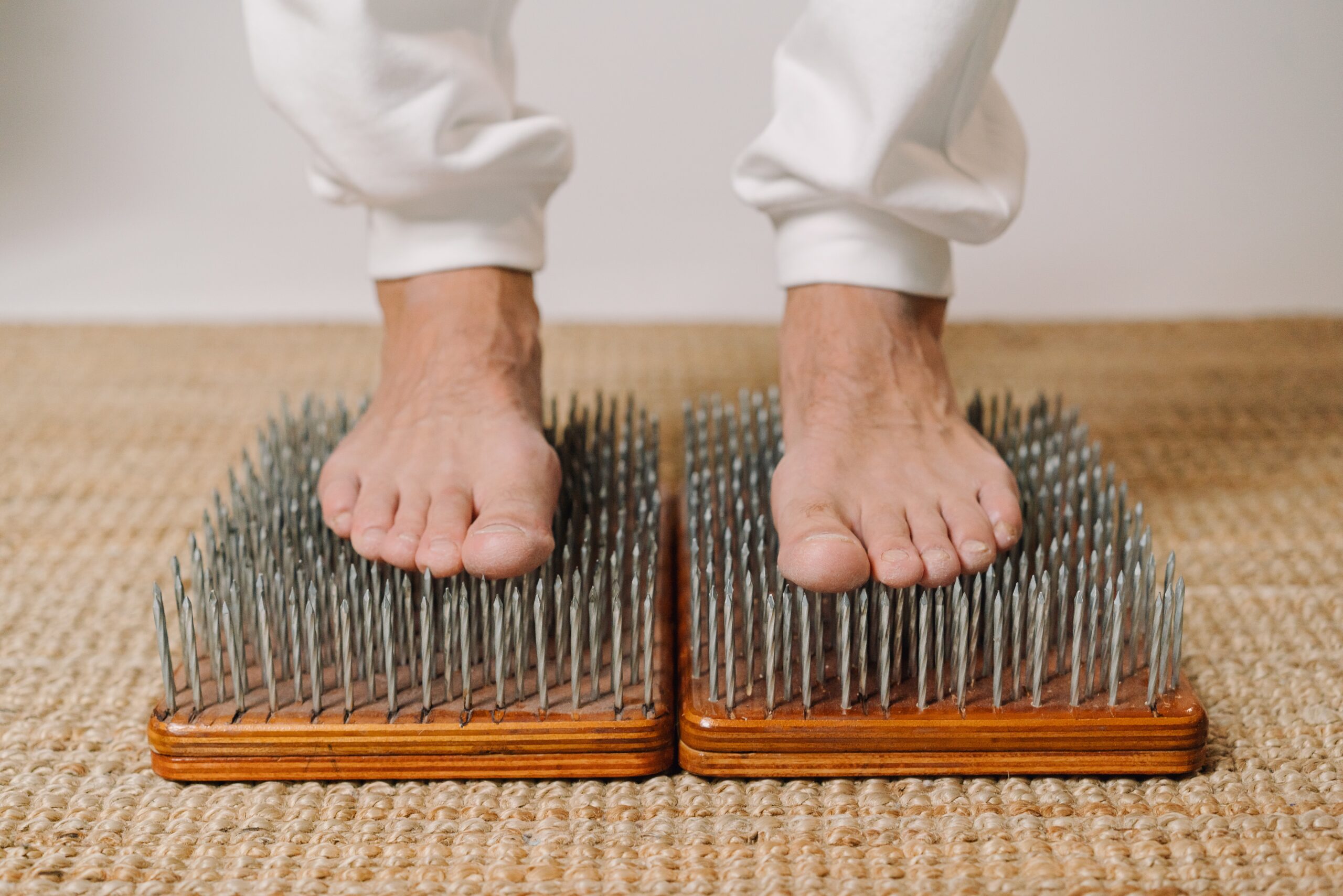
Are you chronically stiff, and always in pain? Do you move like an awkward robot rather than a fluid (and I don’t mean gender, lolz) and athletic human?
If that’s you, you need to work on your feet. In the fixing-your-pain-and-becoming-a-better-athlete checklist, body awareness, balance, and coordination are at the top of the list. And to improve those neurological qualities of movement, you must re-sensitize your feet.
Oftentimes poor movement quality, and the resulting pain that comes with it is due to…
#1 – The inability to manage your centre of mass over your base of support (i.e. your feet!)
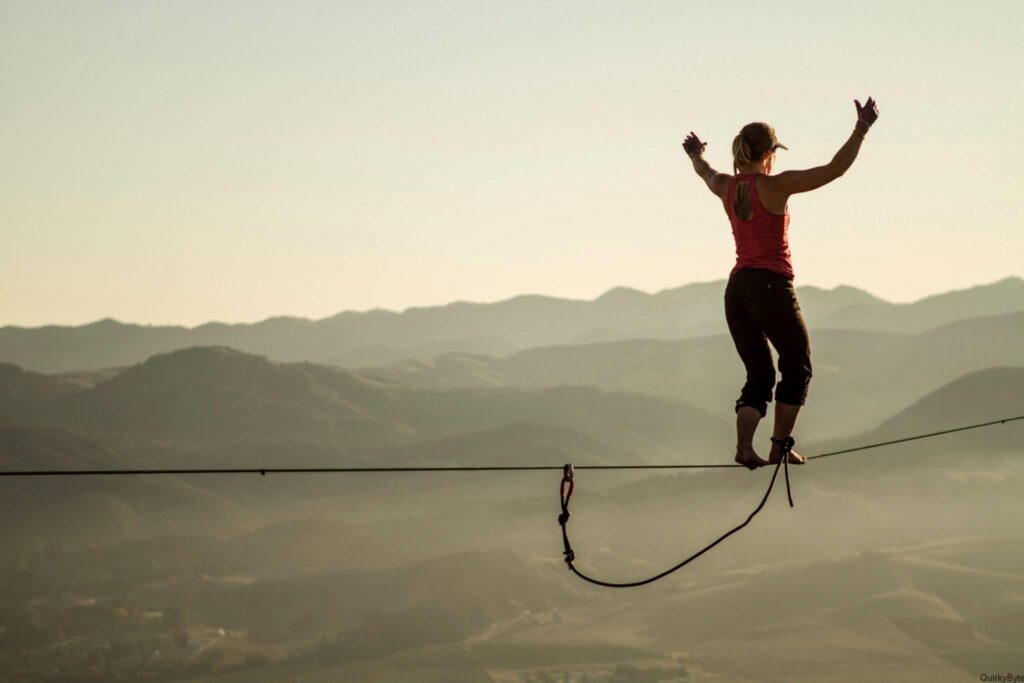
In simpler terms, the inability to manage your COM over your base of support could be described as poor balance.
Poor balance leads to a reflexive stiffening of the entire body.
This subconscious, reflexive stiffness limits your available movement options, which causes you to overuse certain movement strategies. Ultimately, this leads to chronic pain.
Good balance on the other hand allows your brain to let go of the “emergency brakes” (i.e. the aforementioned reflexive stiffening of the body). Good balance allows more degrees of freedom, or movement options, above the kinetic chain. Let’s use snowboarding as an example.
Beginner snowboarders are stiff and lack movement options because they’re unable to manage their COM over their feet. Notice that the stiffness in the beginner snowboarder’s body isn’t due to a lack of flexibility. It’s a neurological, body awareness problem more than it is a flexibility problem.
On the other hand, advanced snowboarders are fluid, relaxed, and have an abundance of movement options because of their ability to effectively manage their COM over their feet. Once again, their graceful movement doesn’t come from having ballerina-level flexibility. It comes from balance.
#2 – The inability to distribute load across ALL your joints.
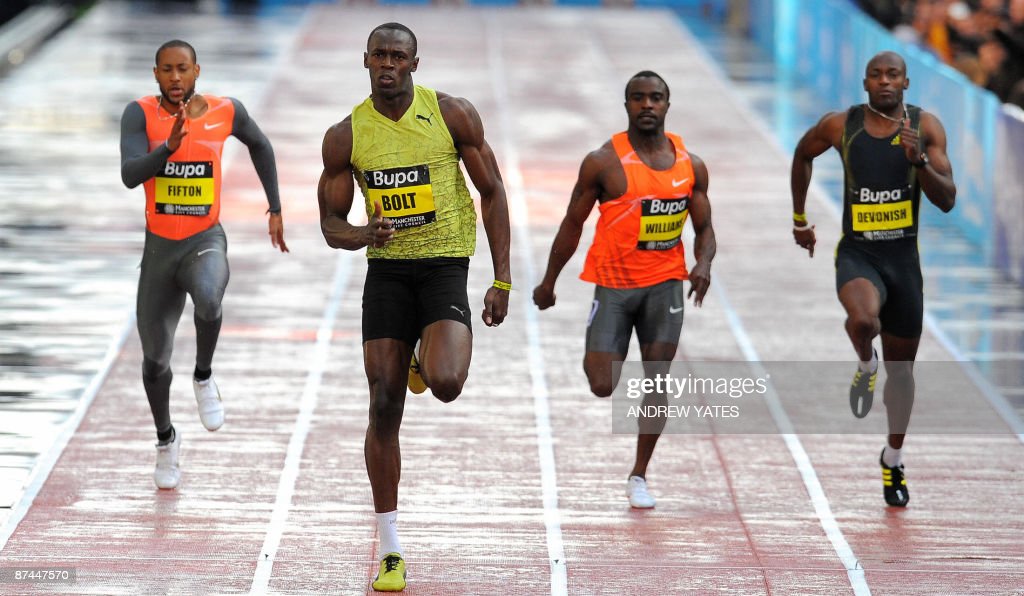
A lot of the strength training world incorrectly simplifies complex human anatomy into what might best be described as a cartoon stick figure, where the only joints of note are the ankles, knees, hips, shoulders, elbows, and wrists.
Let’s do the math: 2 ankles + 2 knees + 2 hips + 2 shoulders + 2 elbows + 2 wrists = 12 joints. 12 joints to try and disperse the force of running, jumping, changing direction, throwing, rolling, and other fundamental human movements? Good luck not ending up in the ER with a full-body cast…
In reality, there are significantly more joints in the body that are designed to absorb and overcome force. A lot more than 12.
There are 33 joints in each foot, 264 in the spine, and 100+ in the ribcage. More in the skull, shoulder girdle, hands, and pelvis too, but fuck it, you get the point. There are a lot of joints in the body, and you need to get them to work together so that it’s not just your ankles, knees, and hips that are getting chronically beat down, as examples (although to be fair, the second hyperlinked video is a perfect example of how intelligent training can make certain joints extremely robust and elastic).
How does foot sensitivity come into play?
Good, fluid movement is reflexive movement – it takes place at a subconscious level. When two bones (i.e. a joint) move apart, it lengthens the tissues (muscles, ligaments, tendons) that are holding them together. Reflexively and without conscious awareness, your brain will contract said tissues so that your joints don’t explode and fly apart. This process occurs in every single joint in the body as you move around.
When your balance is good (i.e. your weight is over your feet), your brain can reflexively self-organize the hundreds of joints in your body to evenly absorb (and then if you want, overcome) the forces imposed on it.
When your balance is poor and your COM isn’t oriented over your feet, your body clenches up (a reflexive response to the perceived sensation of falling). When you’re already clenched up, you lose the ability to load across all of your joints. You lose the ability to move in a fluid, relaxed manner.
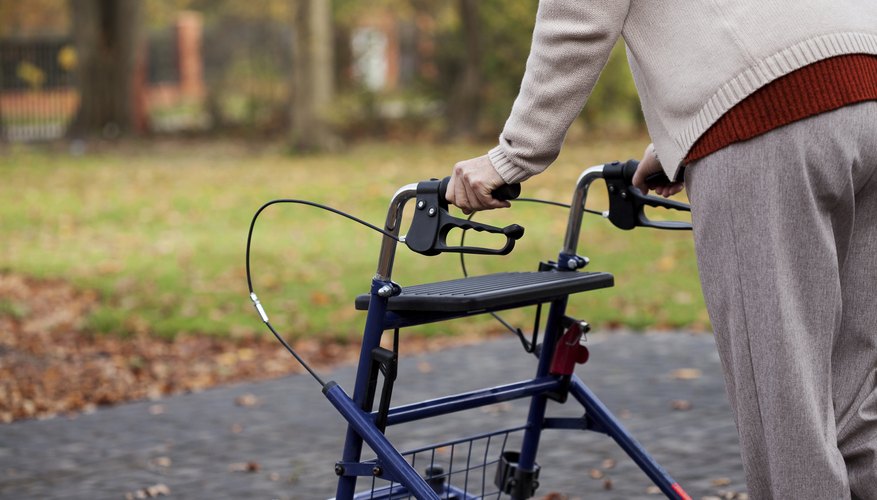
When you re-sensitize your feet, you regain the ability to balance. You regain the ability to load across all of your joints.
Think of it this way: When you’re moving around, your feet are supposed to relay tons of information about the external environment (i.e. the ground) to your brain, which then processes that information within fractions of a second to create fluid and efficient movement. Imagine that the nerves travelling from your feet, all the way up your spine and into your brain are miniature garden hoses. Now imagine that the miniature garden hoses in your feet are all tangled, bunched, and knotted up. The flow of information moving from your feet to your brain is now severely limited if not non-existent. And because your brain is deprived of input/information about the external environment, it’ll inevitably create errors in its output/movement. Movement errors in the form of poor balance, limited movement options, and an inability to distribute load evenly across all your joints. That’s why it’s so important that you re-sensitize your feet.
What can I do to re-sensitize my feet?
Awareness. The recovering alcoholics were spot on. Awareness is the first and most important step to getting your shit together. And in the context of improving your movement quality, you’ve got to be aware of where your weight is distributed across each foot. You’ve got to understand the tripod foot, and cultivate an awareness of your foot pressures.
#1 – Understand the tripod.

You want to discover where the tripod of each foot is. The outer corners of where your pressures, or weight, are distributed makes up the tripod. In a normal foot, the tripod should be made up of the calcaneus (heel bone), 1st MTP joint (big toe knuckle), and 5th MTP joint (pinky toe knuckle). This gives you the largest base of support from which your body can stay balanced and efficiently absorb force. Oftentimes, a person’s tripod is short and narrow. Instead of having a large base of support to centre their weight over, they have the monumental task of trying to balance and do all their daily activities on what movement expert Gary Ward refers to as “ice skates”.
#2 – Pay attention to your foot pressures (where’s the tripod?)
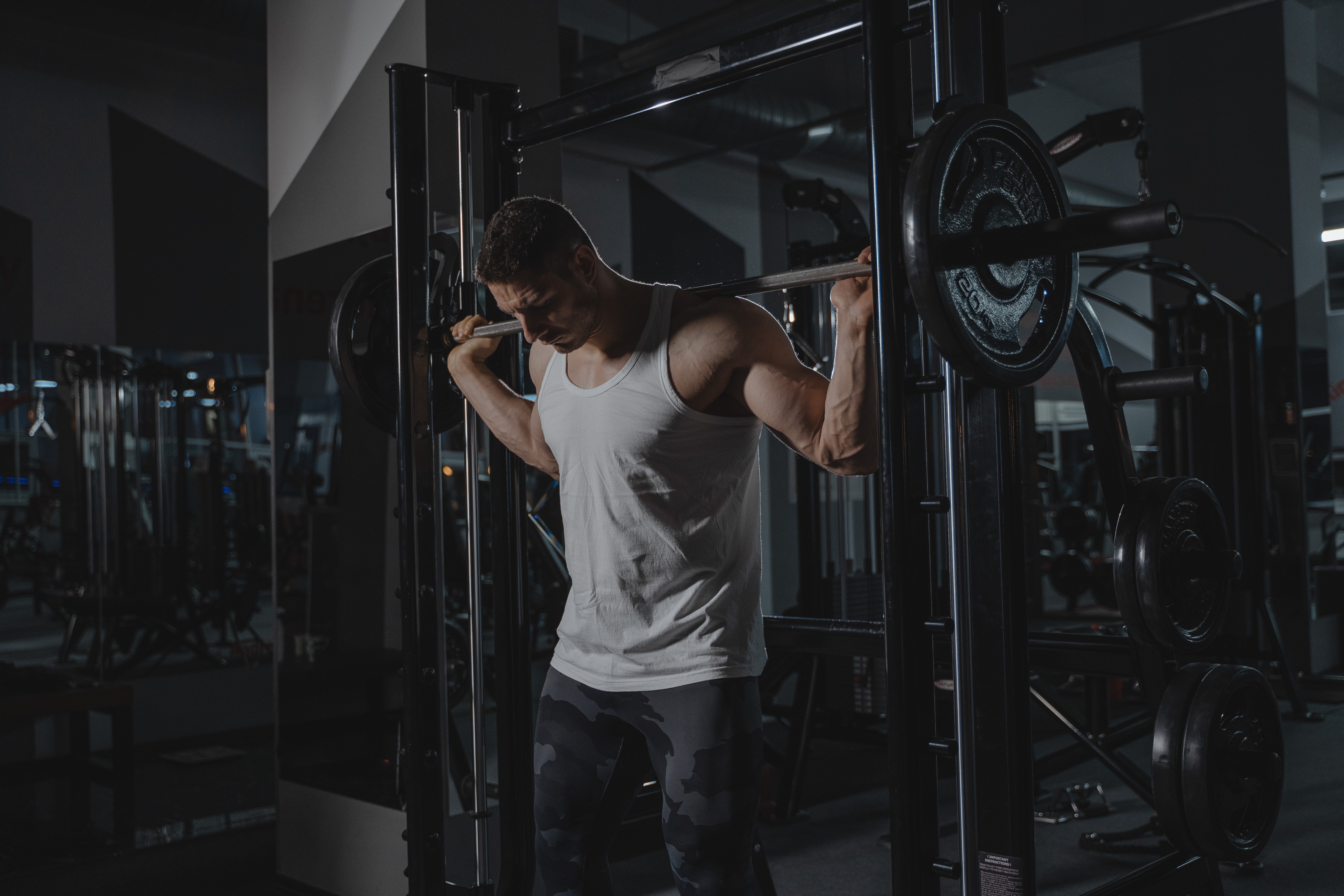
Pay attention to where the pressures are in your foot. In other words, try and feel where the tripod is at any given moment when your feet are flat on the floor. Pay attention to your foot pressures when you’re brushing your teeth. When you’re cooking dinner. When you’re walking. When you’re lifting weights. Pay attention to your feet and your movement will improve.
Now as you pay attention to your foot pressures, it’s very important to understand that the goal is to cultivate AWARENESS and the ability to feel SENSATION, versus trying to FORCE a tripod down into the floor. Remember, good quality movement is reflexive movement, so squeezing/forcing your foot down into the ground will cause everything up the chain to squeeze, clench, and stiffen up as well. Conversely, bringing awareness to, and improving sensation in your foot will cause everything up the chain to reflexively contract or relax in a way that promotes pain-free, athletic movement.
I always try to simplify complex topics into easily digestible bits of information for you, dear human performance enthusiast. But this one was difficult; we’ve only covered the tip of the foot function iceberg. Beyond the practical tips outlined today, there are a myriad of ways in which you can manipulate your feet to reduce pain and become more athletic. But simply paying attention to your foot pressures is a great place to start :).
If you need a more detailed, individualized approach to improve your health and performance, don’t hesitate in reaching out to me with your goals and main problems of concern in the “let’s get started” box below. I’d love to play a part in your journey to becoming healthier and happier!
Pat Koo
BKin, CSCS
Further reading…
Gary Ward’s “Wake Your Feet”, “Closed Chain Lower Body Biomechanics”, and “Wake Your Body”
IKN’s The Neurology of Movement
Human Anatomy, 6th edition (Martini)
Anatomy Trains (Myers)
Motor Control and Learning, 5th edition (Schmidt & Lee)
The Inner Game of Tennis (Gallwey)


